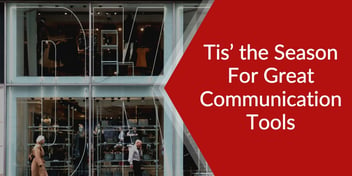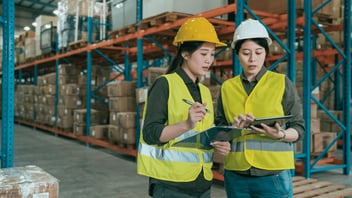Cables are an integral part of a business. They transport electricity as well as data across all parts of the facility. Cables can also be an expensive investment. Swapping out damaged cables on a regular basis will increase materials costs. Most importantly, unprotected cables can increase the likelihood of trips and falls. According to the Centers for Disease Control and Prevention, 26% of the 8,982,730 nonfatal work injuries in the U.S. in 2017 were related to slips, trips, and falls.
Investing in a cable protection system will save businesses money in the long run and keep employees and visitors safe by preventing tripping and falling accidents.
Just like safety training affects the business’s bottom line, well-protected cables reduce hazards and risks, ensuring working environments are secure as well as improving efficiency in the facility. An easy and inexpensive way to protect them is with covers designed to keep them securely tucked out of harm’s way.
Cable protectors are personal safety products that are designed to reduce and control any risk of personal injury due to a potential trip hazard while protecting cables. These covers also keep cables free from water damage and harmful chemicals and reduce the possibility of electrical shortages due to damage.
→→ FREE DOWNLOAD: How To Turn Your Safety Program Into A Full Blown Safety Culture
Here are four tips for cable protection in your facility:
1. Prevent Unnecessary Trips And Falls
Keeping employees safe from fall and trip hazards is a major contributing factor for investing in cable protection in any workspace. Not prioritizing your employees’ safety can lead to a disengaged workforce with lower productivity. Cable protectors cover and insulate cables, protecting them from damage as well as providing a trip-free surface that employees and visitors can walk over. ADA options will also keep your facility compliant by providing a smooth transition over cables for foot traffic as well as wheelchairs.
2. Prevent Hazards From Damaged Cables
Damaged cables are not only costly to replace, but they are also dangerous. Electrocution, faulty operation, fire hazards, and code violations are some of the dangers involved when cables become frayed, pinched, or exposed. They also cause equipment malfunction, causing loss of productivity. Protecting cables will help reduce the cost for replacement, time loss from equipment malfunction, and ensures employee safety.
3. Protect Cables From The Elements
Exposed cables are vulnerable to the elements. Prolonged exposure to direct sunlight, snow, and rain can lead to premature aging of the cable. Unprotected cables exposed to the elements may cause splits and tears which can lead to water seeping into the cable, resulting in electrical malfunctions. Cable protectors insulate cables and wires from extreme weather and direct sun exposure, prolonging the life of the cables.
4. Keep Cables Safe From Pests
Unprotected outdoor cables are at risk of damage from rodents and other wildlife. Rats and squirrels in particular love to gnaw on wires. Cooler temperatures can drive some of these pests indoors, so your exposed indoor cables aren’t 100 percent safe from them either. Damaged cables can lead to disruption in production, fire hazards, and cause water and corrosion damage due to exposed wires. A heavy-duty cable protector encloses the cables, preventing the pest from accessing them in the first place.
In Closing
Cable protectors are a small investment to make that will help create a positive safety culture in your facility. They help reduce the possibility of trips and falls, increase productivity, and minimize the likelihood of needing to replace cables on a regular basis.
Author Bio
Justin Lytle is the Product Manager at Checkers Safety, a manufacturer of quality safety products based in Broomfield, CO. Justin has been employed at Checkers for 11 years. He values hard work and honesty, and the process involved with continuously working toward both personal and professional growth.






Leave a Comment